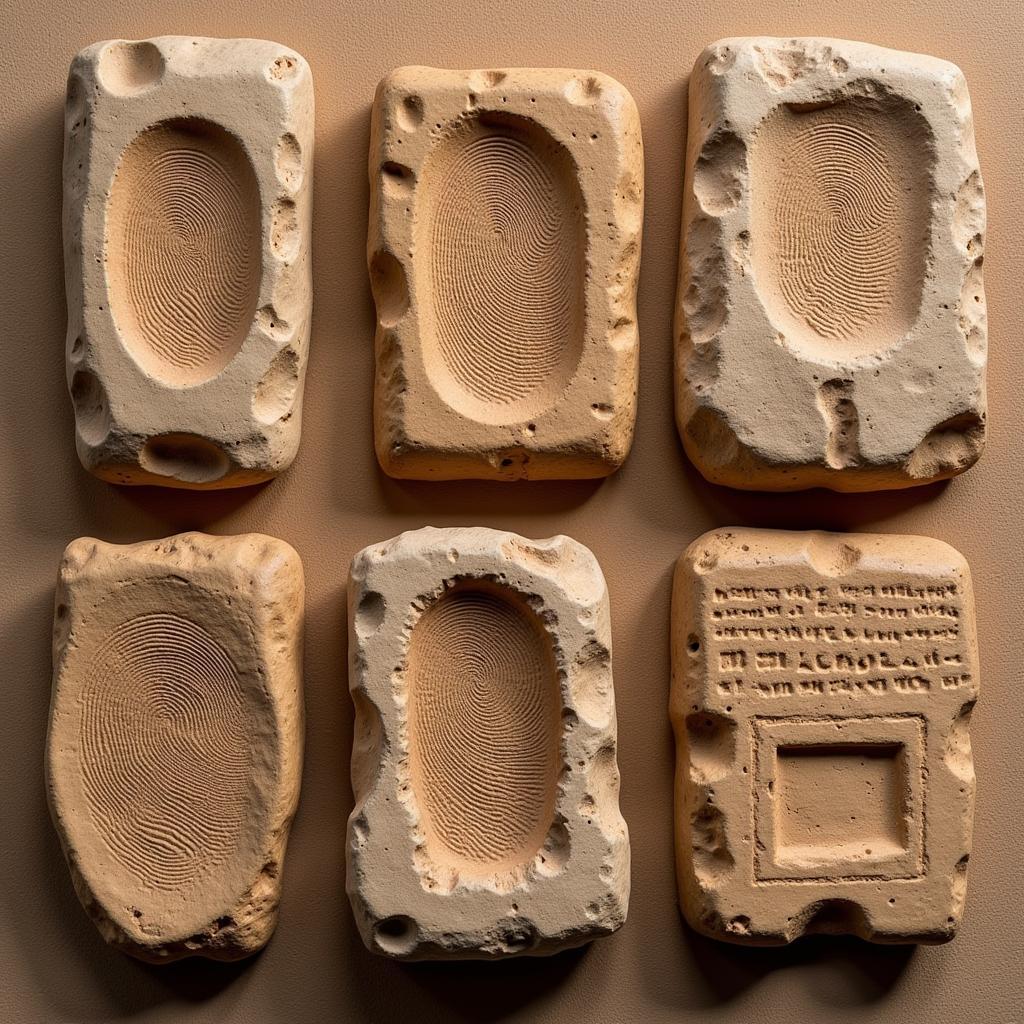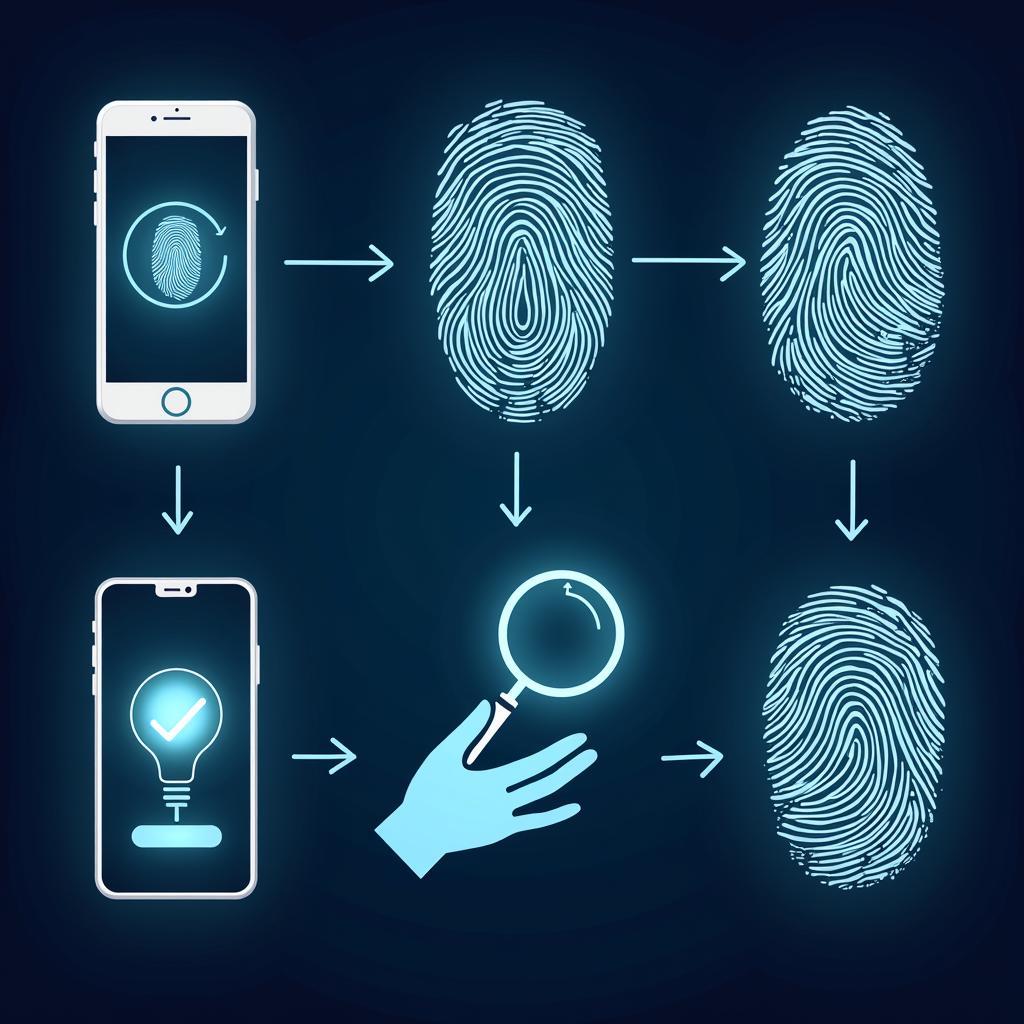Giỏ hàng hiện tại chưa có sản phẩm nào!

A History of Fingerprinting: Unlocking the Secrets Behind IELTS Reading
Fingerprinting, the practice of collecting and analyzing unique ridge patterns found on human fingertips, boasts a rich and fascinating history spanning millennia. From its ancient origins to its modern-day applications in forensic science and beyond, the journey of fingerprinting is deeply intertwined with the evolution of human civilization itself. This article delves into the captivating history of fingerprinting, providing valuable insights for those preparing for the IELTS Reading section.
Ancient Origins: Tracing Fingerprints Through Time
The use of fingerprints can be traced back to ancient civilizations, long before their scientific significance was understood. Archaeological evidence suggests that fingerprints were utilized for various purposes:
- Ancient China (3rd Century BC): Fingerprints were impressed on clay seals and documents as a form of signature and personal identification.
- Babylon (700 BC): Clay tablets from this era bear fingerprint markings, indicating their potential use in legal transactions and record-keeping.
- Egypt (3000 BC): Fingerprints have been discovered on ancient Egyptian tombs, suggesting their use in identifying artisans and laborers.
While these early civilizations may not have fully grasped the uniqueness of each individual’s fingerprints, their practices demonstrate an inherent understanding of fingerprints as a form of personal identification.
 a-history-of-fingerprints
a-history-of-fingerprints
The Scientific Revolution: Laying the Foundation for Modern Fingerprinting
The scientific study of fingerprints gained momentum during the 17th and 18th centuries, driven by advancements in anatomy and microscopy:
- Marcello Malpighi (1686): An Italian physician, Malpighi published detailed observations of fingerprint patterns, including ridges, loops, and whorls. His work is considered a cornerstone in the scientific understanding of fingerprint morphology.
- Johann Christoph Andreas Mayer (1788): Mayer, a German anatomist, asserted that fingerprints were unique to each individual, marking a pivotal moment in recognizing their potential for personal identification.
These pioneering studies paved the way for the development of fingerprinting as a reliable identification method in the 19th century.
The Birth of Modern Fingerprinting: From Theory to Practice
The 19th century witnessed the transformation of fingerprinting from a scientific curiosity to a practical tool for criminal identification:
- William Herschel (1858): A British civil servant working in India, Herschel began using fingerprints on contracts to prevent fraud and impersonation. His meticulous record-keeping over two decades provided valuable data demonstrating the persistence and uniqueness of fingerprint patterns.
- Henry Faulds (1880): A Scottish physician working in Japan, Faulds independently recognized the potential of fingerprints for criminal identification. He devised a system for classifying fingerprints and even used them to solve a minor crime.
The late 19th century saw the widespread adoption of fingerprinting by law enforcement agencies worldwide. Sir Francis Galton, a British polymath, played a crucial role in standardizing fingerprint classification and promoting its use in criminal investigations. By the turn of the 20th century, fingerprinting had firmly established itself as a cornerstone of forensic science.
Fingerprinting in the 20th Century and Beyond: Technological Advancements and New Applications
The 20th century ushered in significant technological advancements that revolutionized fingerprint analysis:
- Automated Fingerprint Identification Systems (AFIS): Developed in the mid-20th century, AFIS utilizes computer algorithms to rapidly search and match fingerprints against vast databases. This technology dramatically enhanced the speed and efficiency of fingerprint identification.
- Biometric Authentication: Fingerprinting technology has become ubiquitous in the 21st century, finding applications beyond criminal justice. Smartphones, laptops, and other devices utilize fingerprint sensors for secure access and authentication.
Conclusion: The Enduring Legacy of Fingerprinting
From its ancient origins to its modern-day applications, the history of fingerprinting is a testament to human ingenuity and our quest to understand and utilize the unique characteristics that define us. As technology continues to evolve, fingerprinting will undoubtedly continue to play a vital role in various aspects of our lives, ensuring security, facilitating identification, and unlocking the secrets held within our fingertips.
FAQ
1. What are the main types of fingerprint patterns?
The three primary fingerprint patterns are loops, whorls, and arches.
2. Why are fingerprints considered reliable for identification?
Fingerprints are unique to each individual and remain unchanged throughout life. Even identical twins possess distinct fingerprint patterns.
 modern-applications-of-fingerprinting
modern-applications-of-fingerprinting
Need Assistance?
Contact us at 0372960696 or email tuyet.sixt@gmail.com. Our address is 260 Cầu Giấy, Hà Nội. Our dedicated customer support team is available 24/7 to assist you.